![]()
Aroids and other genera in the Collection
Take the Tour Now?
Orchids
The
Exotic Rainforest
Plants in
the Exotic Rainforest Collection
Images on this website are copyright protected. Contact
us before attempting to reuse.
In depth information on how to grow Philodendron species, Click this Link
Within our collection we have many species of Philodendron.
If you are seeking other photos,
click this link
This plant is currently being researched and the information on this page is little more than my personal research notes.
Philodendron
collected near
Limón, Ecuador
species unknown
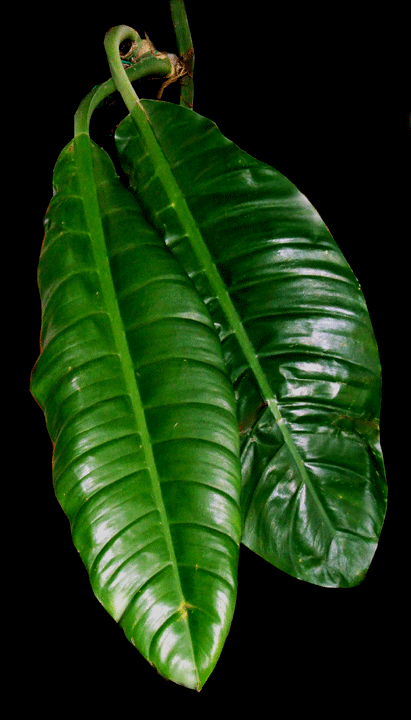
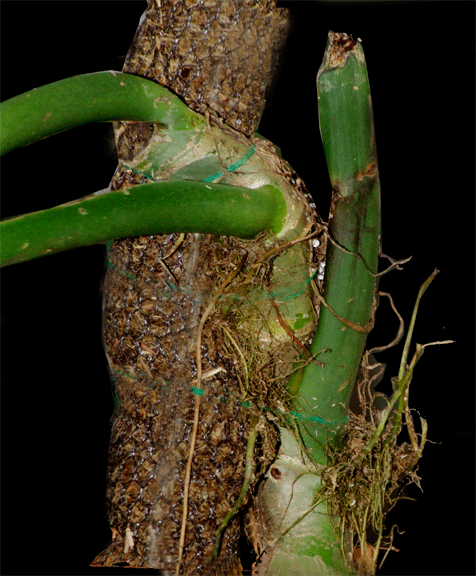 Dr.
Tom Croat of the Missouri Botanical Garden examined my specimen briefly in Miami in September, 2008
as well as the photos on this page and does not appear to believe this
Philodendron has been identified to science. The specimen was
acquired from an Ecuadorian plant nursery and was supposedly originally
collected near Limón, Ecuador. Limón is between Quito
and Guayaquil.
However, verified collection data is not verified.
Dr.
Tom Croat of the Missouri Botanical Garden examined my specimen briefly in Miami in September, 2008
as well as the photos on this page and does not appear to believe this
Philodendron has been identified to science. The specimen was
acquired from an Ecuadorian plant nursery and was supposedly originally
collected near Limón, Ecuador. Limón is between Quito
and Guayaquil.
However, verified collection data is not verified.Apparently an epiphyte (ep-a-FIT) or hemiepiphytic climbing vine, the petioles which connect the leaf blade to the stem are spongy and almost "D" shaped to shallowly and broadly canaliculate ("C" shaped) at the apex but shallower near the base. The shape of the adaxial surface (upper) of the petiole appears to change due to the collection and storage of water and/or starches. The total length of the blades and petioles are approximately 3 feet (90cm). The petioles measure 3/4 inch (2cm) in thickness and alone are about 12 inches (30cm) in length. The blades are subcoriaceous (less than leathery), oblanceolate (both oblong and lance shaped) and presently measure approximately 24 inches (60cm). The blades of our specimen possess 11 to 13 primary lateral leaf veins per life side. The mid rib and petioles appear sulcate and have numerous fine parallel grooves. The upper blade (adaxial surface) is highly glossy while the underside (abaxial surface) is matte and bicolorous. The primary lateral leaf veins are sunken and are conspicuously quilted on the adaxial surface, veins are convex beneath. No tertiary veins (minor veins) are apparent. The stem of the plant is approximately 1.5 inches (3.8cm) thick with pubescence (hair) and the roots are tan and relatively fine in appearance. The internodes are Stem
long measuring approximately 6.3 to 7,6 cm (2.5 to 3 inches).
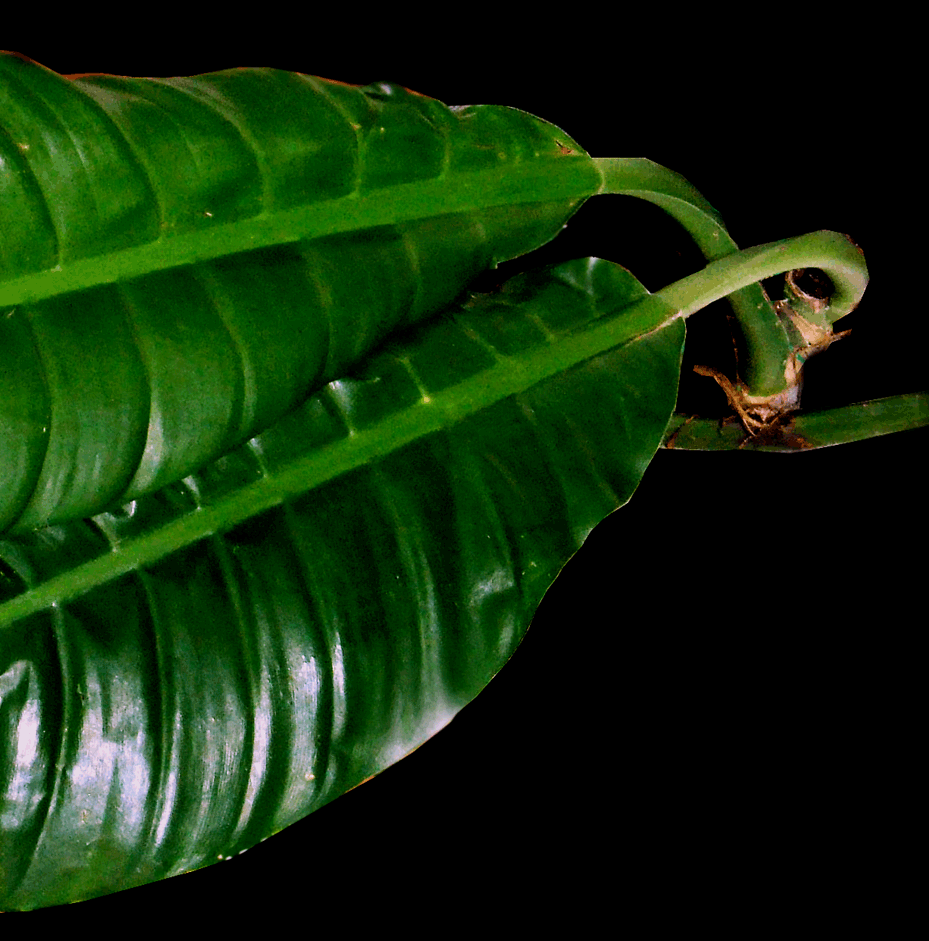
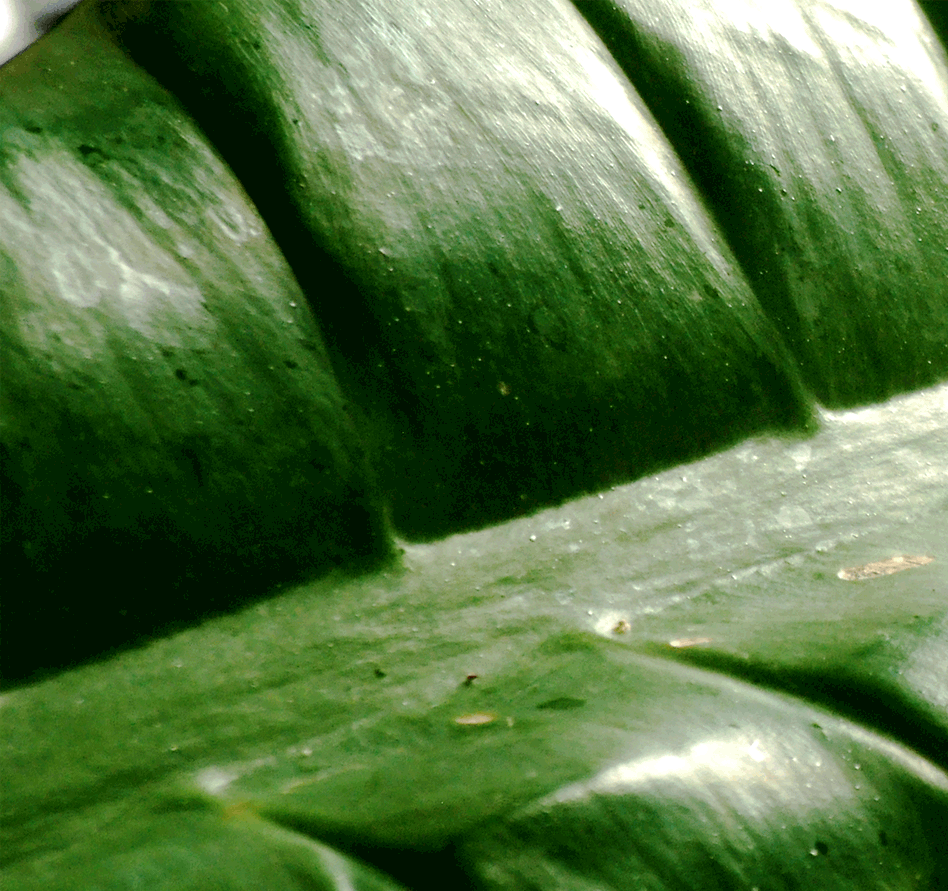
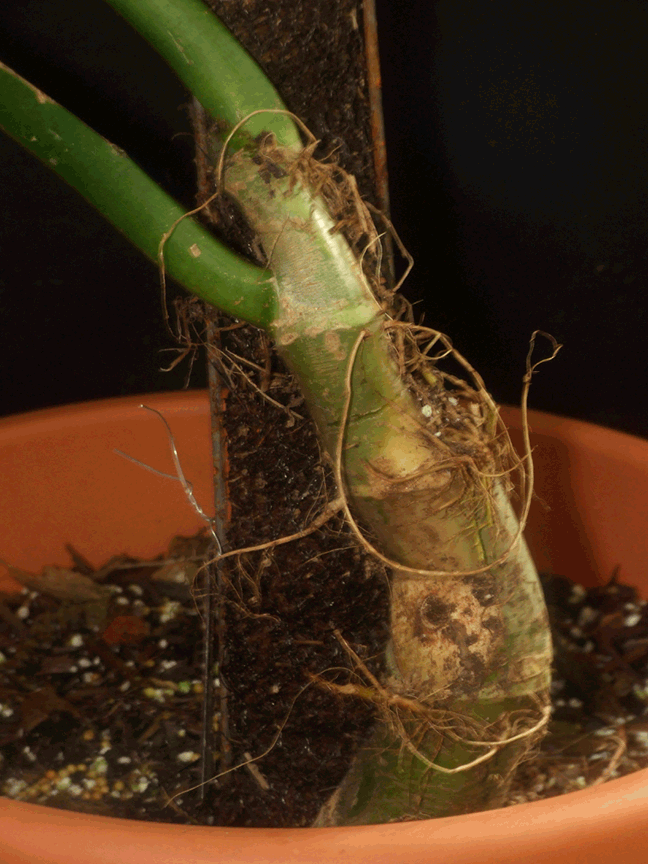
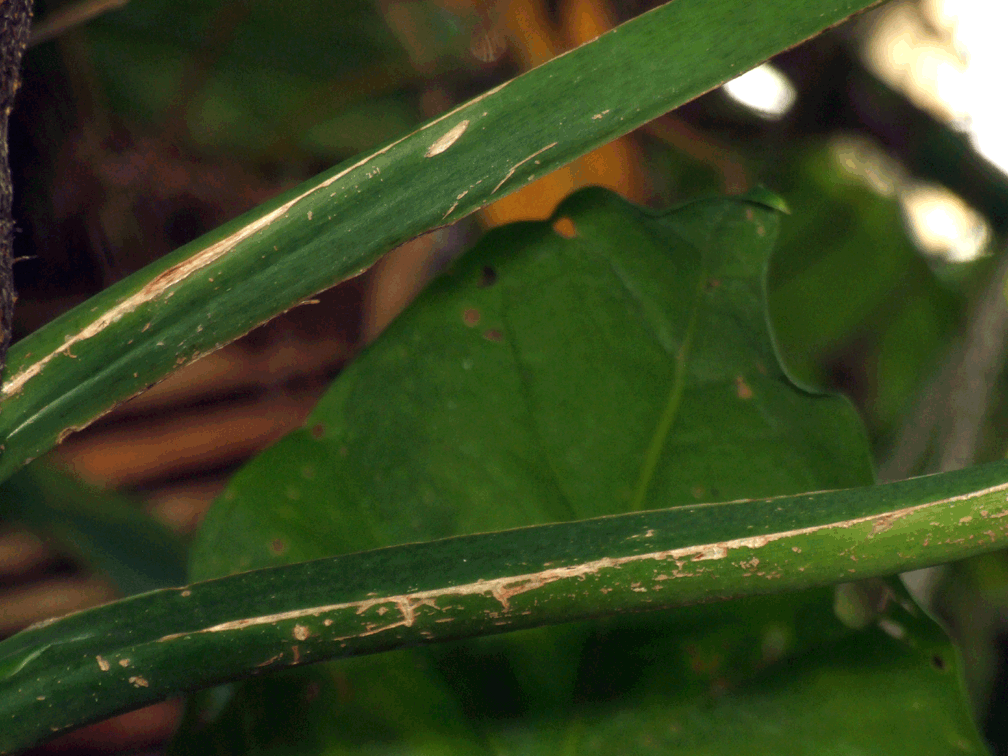
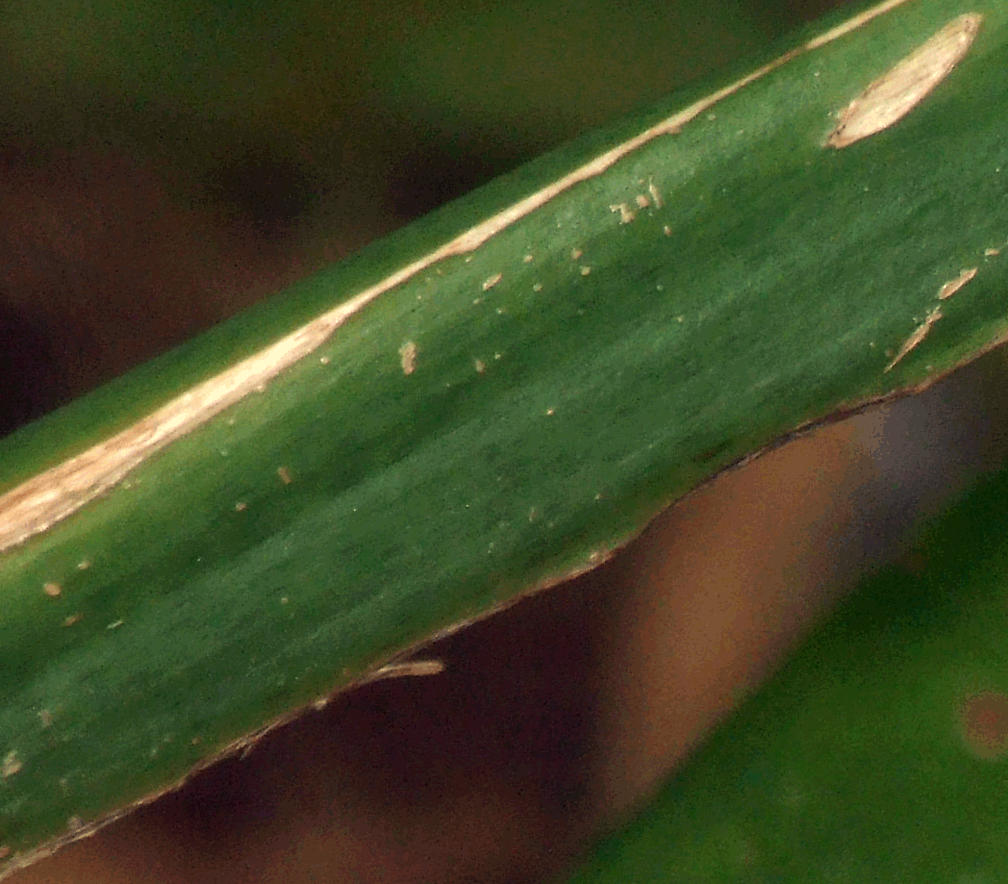
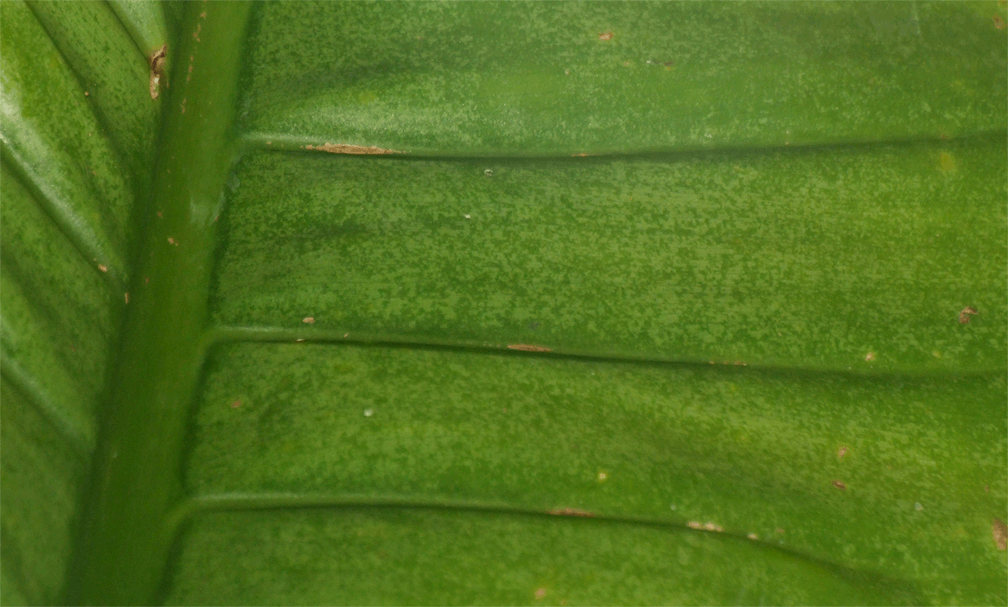
Join the International Aroid Society: http://www.exoticrainforest.com/Join%20IAS.html
If you are seeking information on other rare
species, click on "Aroids and other genera in the Collection" at the top and look for the